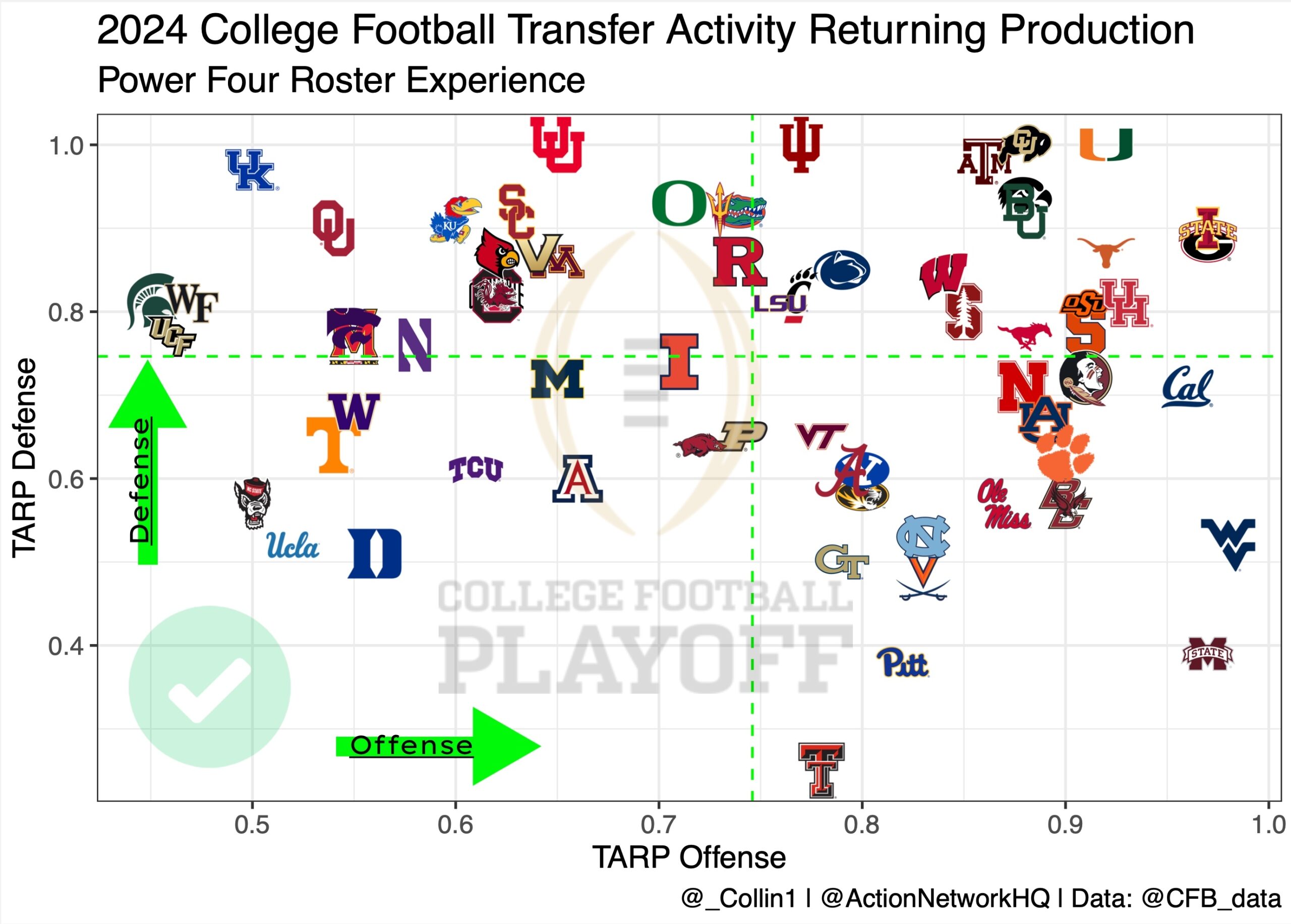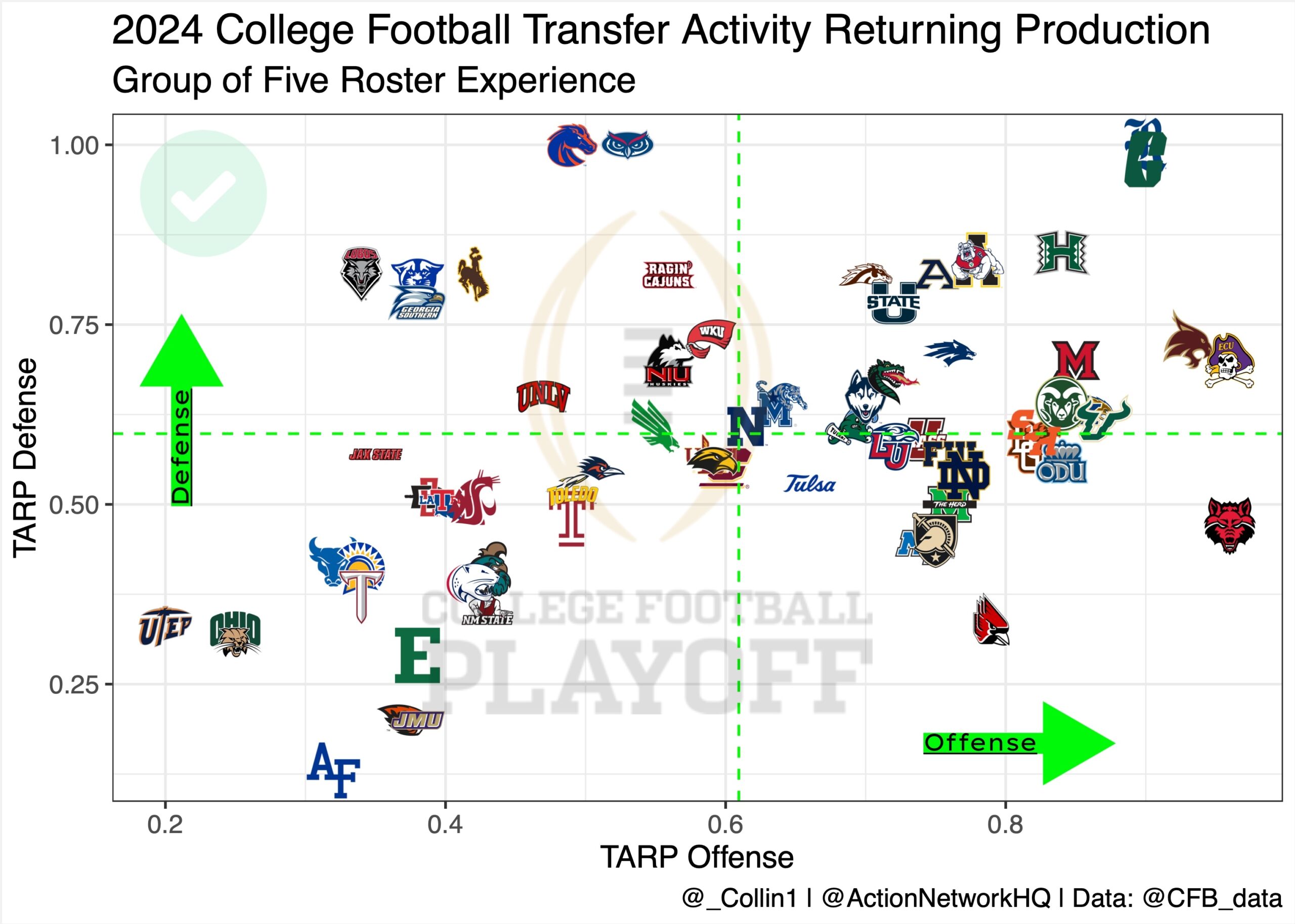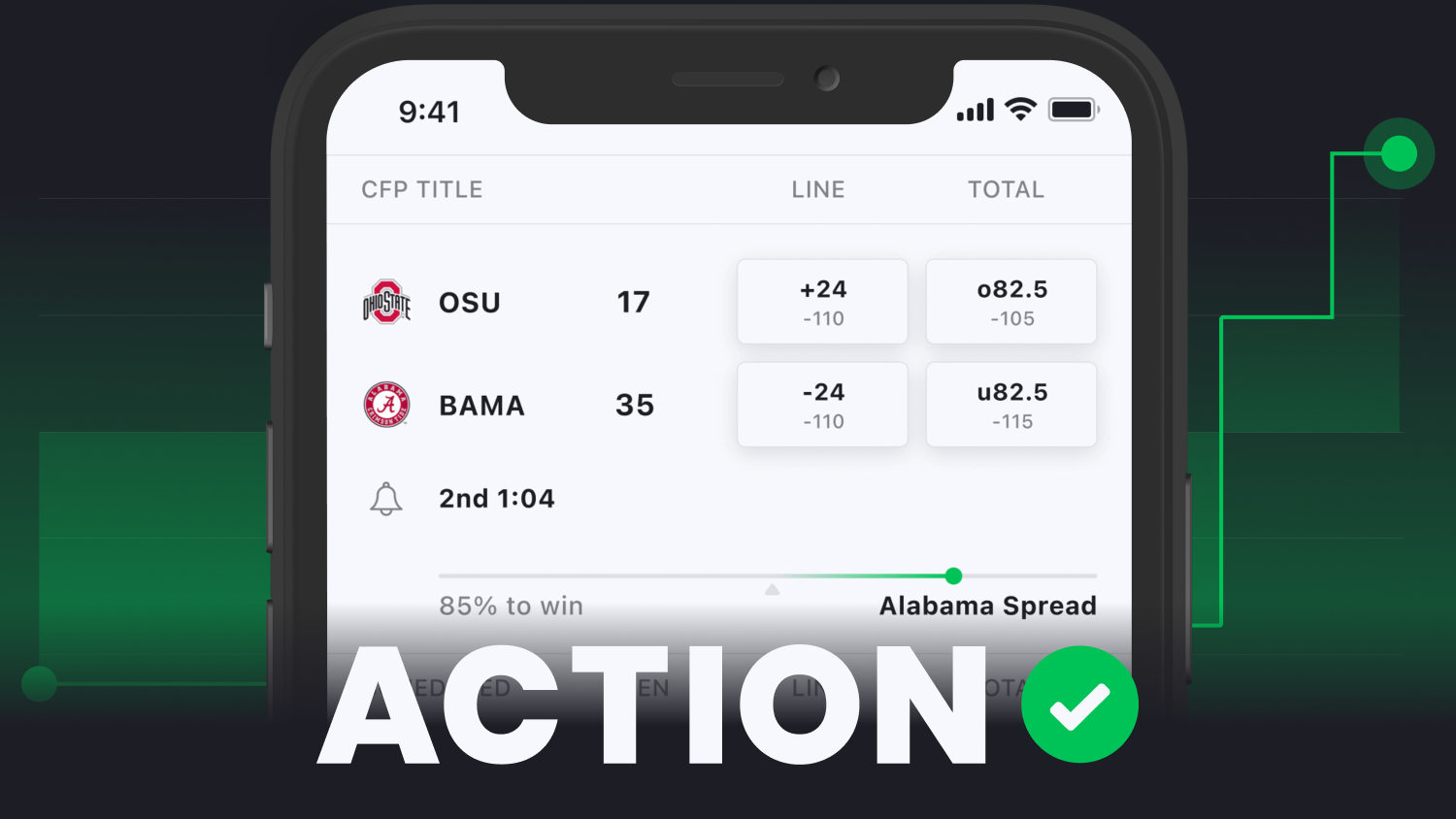The end of April could not come soon enough for college football coaches and players. April 30 marked the final day of the transfer portal cycle until the 2024 regular season concludes.
TARP — transfer activity and returning production — is the acronym Action Network uses to describe the status of a team's roster in terms of returning experience heading into fall camp.
With the spring window now closed, there have been plenty of changes made since the first edition in February.
The portal generated plenty of buzz throughout April, and only a few from the top 500 have yet to find a home for the fall. The statistics of the players who have committed have been assigned to their new team. Returning production then becomes a calculation of last year's totals divided by the same metrics of the 2024 projected roster.
Another key change is the roster review of 133 FBS teams, as Kennesaw State will be taken into consideration next year.
College football still lives in a world of super seniors and graduate transfers, a legacy from the 2020 pandemic season when the NCAA granted every player an additional season.
TARP aims to be the most accurate assessment of production by reviewing which seniors are still in the program. A large percentage of sixth-year players are on the offensive and defensive lines, with plenty of teams returning double-digit players who enrolled in 2019 or earlier.
Finished 133 Spring Roster Review for Graduate Students and/or Super Seniors. Highest number of rosters spots:
Northwestern 24
Hawai'i 17
Fresno State 16
Ok State 15
Ole Miss 14
Nevada 14
Kent State 13
Bowling Green 12
Colorado State 12
UCF 12— Collin Wilson (@_Collin1) April 24, 2024
Experience is the biggest indicator of a team's direction for the upcoming season.
Iowa State, Georgia and Miami are three of the biggest offseason benefactors from TARP. UTEP, Air Force and Oregon State are three teams with the biggest offseason losses.
Keep in mind that the portal hasn't always played out with preseason expectations — none of the eight teams that made the College Football Playoff over the previous two years finished top-10 in the transfer portal rankings.
Both USC and LSU dominated in the transfer portal in previous seasons but fell significantly short of the College Football Playoff. And, as of writing, Colorado's roster is still in flux as head coach Deion Sanders enters his first season in the Big 12.
This article will serve as 2024's final version of TARP, with win totals and conference championship odds making their way to the forefront at Action Network.
The formula for TARP is different on each side of the ball. A team’s power rating can swing by as many as 12 points regarding experience. College football is dominated by offense, so TARP has a range of +-7 points offensively and +-5 defensively.
The summation of the offensive and defensive categories has a weighted scale. The midpoint for offensive TARP is 76%, while the average returning count for defense was 68%.
If a team returns 76% on offense and 68% on defense, TARP adjustments will not provide points to a team's existing power rating.
Here are the categories calculated to determine a team's TARP number:
Offense:
- Passing Yards (33%)
- Receiving Yards (33%)
- Rushing Yards (7%)
- Offensive Line Snaps (27%)
Defense:
- Tackles (40%)
- Passes Defensed (33%)
- Pressures (10%)
- Stops (17%)
With those calculations in mind, here’s a look at the final TARP tally heading into fall camp:



















































